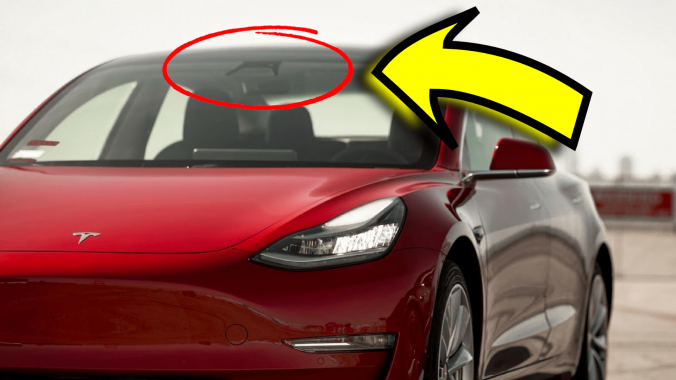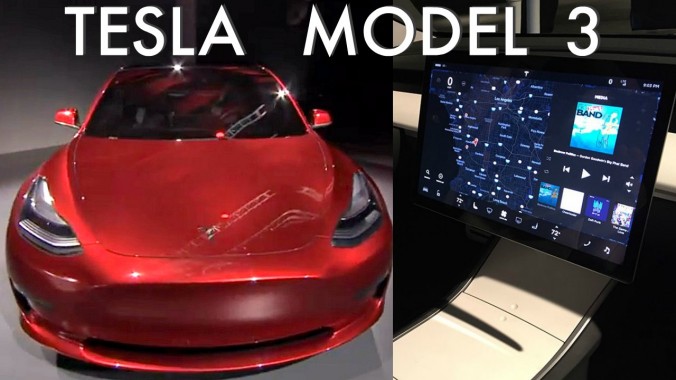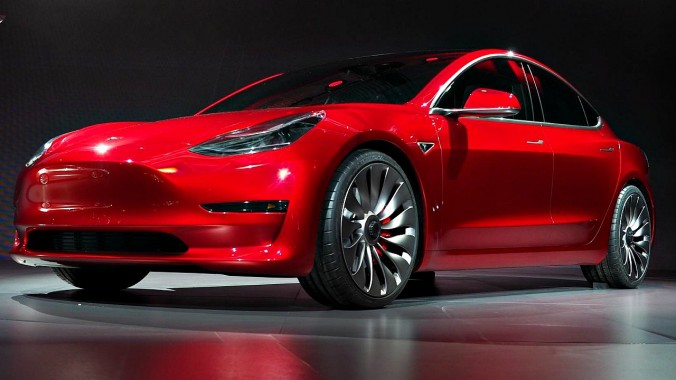Tesla has made it a point to strongly emphasize that the Model S is their most premium flagship sedan. In most ways the Model S is obviously better than Tesla’s smaller, simpler and more affordable sedan, the Model 3. However, there are a few key advantages that the Model 3 has over the Model S.
This video was inspired by this Reddit post.
Cost
The base Model 3, which should start delivering later this year, is $36,000 at its cheapest which includes the unavoidable delivery fee. On the other hand, the cheapest Model S is $75,000. So technically you could get two base Model 3’s for the same price as one base Model S (kind of a two for one deal there). We still don’t know how much a loaded AWD Performance version of the Model 3 will cost, but right now it’s safe to say that a Model 3 is half the price of Model S even when they have the same add-ons and options. The Model 3 is also more efficient than the Model S (we’ll get into the reasons why later in this video) but that means charging a Model 3 at home should cost less than charging a Model S because a Model 3 uses less energy than a Model S when traveling the same distance. Given the drastic price difference it’s also safe to assume for most people the car insurance should cost less for the Model 3 compared to Model S. So if saving money is a priority, choosing a Model 3 will definitely give you that advantage.
Battery & Range
Based on EPA documents, all Model 3’s come with newer 2170 battery cells which have 18.5% higher energy density than the older 18650 cells in the Model S. Tesla claims that the 50 kWh standard Model 3 has an estimated range of 220 miles, and the 75 kWh Long Range Model 3 has an estimated range of 310 miles. However, Tesla was found to be under-selling the actual range of the Model 3. According to tests, the Long Range Model 3 has a 78.3 kWh usable battery capacity compared to 72.6 kWh usable battery capacity in the Model S 75D. So even though they’re both equipped with 75 kWh batteries, the Long Range Model 3 actually has more usable capacity compared to the Model S 75D. And what’s even more interesting, according to the EPA, the $45,000 Long Range Model 3 actually has 334 miles of range compared to the $94,000 Model S 100D which has 335 miles of range. That’s a difference of $50,000 in price with a difference of 1 mile in range. That’s pretty crazy and it means Tesla is choosing to under-advertise the Model 3 range capability. Not only that, but a Tesla executive said the 18” Aero wheels that come standard on the Model 3 can potentially add up to 10% range. Some tests have shown it’s more likely to be around 5%, but even then that’s still something that the Model S currently does not have as an option. According to FuelEconomy.gov, the Long Range Model 3 has 130 MPGe which is much better than 103 MPGe on Model S 75. On average, Long Range Model 3 only requires 26 kWh to travel 100 miles compared to 33 kWh per 100 miles on the Model S.
Motor
The Model 3 has a different motor technology. It uses permanent magnet motors for high efficiency instead of induction motors that are used on the Model S. Some people think permanent magnet motors are the cheaper inferior option. However, permanent magnet motors used to be more expensive but have recently come down in price and still hold many advantages. The Model 3’s permanent magnet motors are lighter and have better track performance. They also reduce weight and improve handling. The induction motor on the Model S is larger, heavier, and less efficient resulting in more draw on the battery pack, when compared to a permanent magnet motor. Permanent magnet motors are also more efficient than induction motors over a wide range of RPMs and more efficient at capturing regenerative energy at low speeds. So even though the motor is not a newer tech per say, it does have its advantages compared to whats in the Model S.
Interior Features
The Model 3 has one of the most minimalist interiors in a car right now. It lacks a lot of the physical buttons and knobs that were typical in cars up to this point in time, and it replaced most of those functionalities with one big center-mounted 15” touchscreen display. However, The Model 3 does have some things that the Model S does not. For starters, the Model 3 has a small interior-facing camera built into the rear view mirror, and while Tesla has not yet said what this camera will be officially used for, it’s most likely there to provide some type of facial recognition features for Autopilot or driver profiles, and it’s also very well meant to monitor the inside of the car when it’s used in Tesla’s future ride sharing network. I did an entire video about this if you want to check it out here. The Model 3 center console has more storage space than the S, and with the Model 3 Premium Upgrade Package it also has charging docks for two smartphones. The Model 3 has coat hooks, lighted vanity mirrors, folding rear seat armrest with cup holders, and door pockets, all of which are lacking in the Model S. The Model 3 infotainment computer has a liquid cooled & faster processor which results in a more responsive touchscreen. The Media Control Unit is now powered by an Intel SoC instead of the Nvidia Tegra chip in Model S. The Autopilot ECU is still powered by Nvidia. But it’s worth mentioning the Model 3 needs a lot more processing power because it has to do everything on one processor. The Model S runs the navigation routing and voice recognition on the Instrument Cluster computer which divides the workload. The Model 3’s minimalist interior also provides a better field of vision out of the windshield because it’s completely flat all the way across the dashboard since there is no instrument cluster and the front hood doesn’t stick out as much as it does on the Model S.
Size & Space
You may be saying “Andy, how can this be an advantage when everyone knows the Model S is bigger and more spacious?” Yes that’s true, the Model S is supposed to be the bigger, better car. But the smaller, more compact Model 3 has its advantages too. The Model 3 is 184.8” long and 82.2” wide. The Model S is 196” long and 86.2” wide. So the Model S is about 11” longer and 4” wider. However, with the mirrors folded, the Model 3 is only 76.1” wide and the Model S is 77.3” wide, which only makes up a difference of about 1” in width. With the Model 3 being smaller, it’s most likely easier to park and maneuver in tight spaces. The Model 3 has been reported to have better handling because of it weighing less than the Model S. The Model S 75 curb weight is 4,469 lbs, and the standard range Model 3 curb weight is 3,549 lbs, which is a difference of 920 lbs. The weight difference is also similar when comparing the Model S 100D to the Long Range Model 3 which is a difference of 841 lbs. The lighter weight of the Model 3 also results in better range when compared to a Model S of the same battery capacity. And what’s the most surprising to me is that based on certain tests, the Model 3 has 1.5″ more headroom in the front and 2.4″ more headroom in the back compared to the Model S. Also, the Model 3 has the same amount of front legroom as the Model S, and only 0.2” less legroom in the back. So even though it’s smaller, it might not even be noticed.
Those are the top 5 advantages that the Tesla Model 3 has over the Model S. Does that mean the Model 3 is a better car than the Model S? Absolutely not. There are a ton of advantages that the Model S has over the Model 3 and I’m betting that Tesla releases a new refresh of the Model S very soon with a lot of the advances that the Model 3 has over the current S lineup, but since I’m a Model 3 reservation holder I am just more enthusiastic about the Model 3 for the time being so that’s why I wanted to do this video, to show the Model 3 some love as if I haven’t fanboy’d over it enough already. Let me know what you think in the comments below. Do you prefer the Model 3 over the Model S? Why or why not? Looking forward to hearing from you. Thanks for watching, if you enjoyed this video give it a thumbs up and subscribe to this channel if you haven’t already. My name is Andy and I’ll talk to you in the next one.




